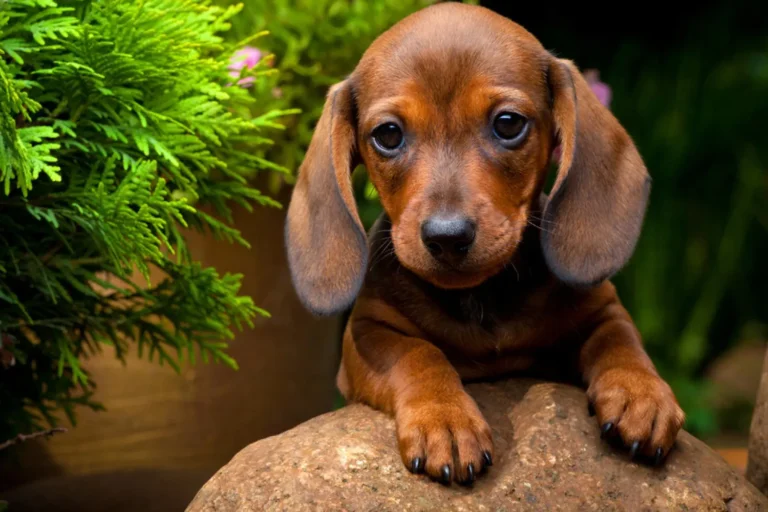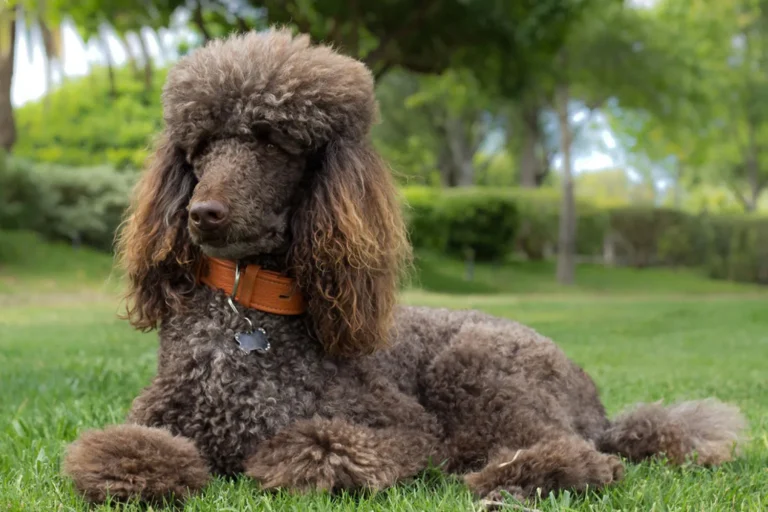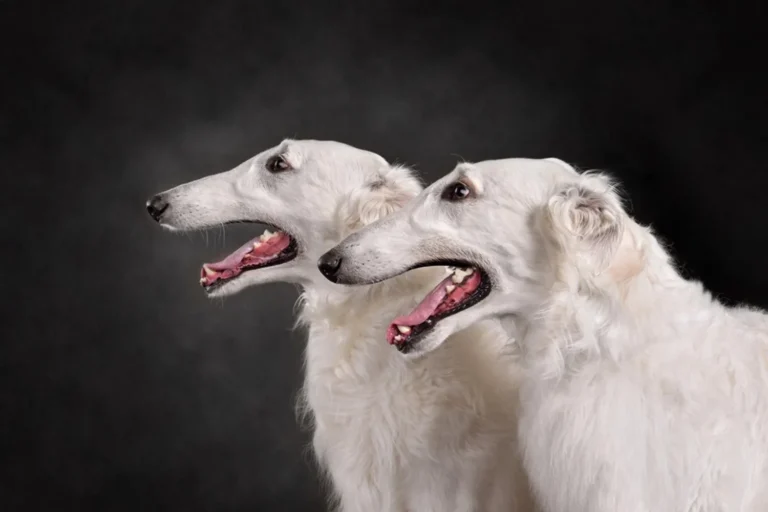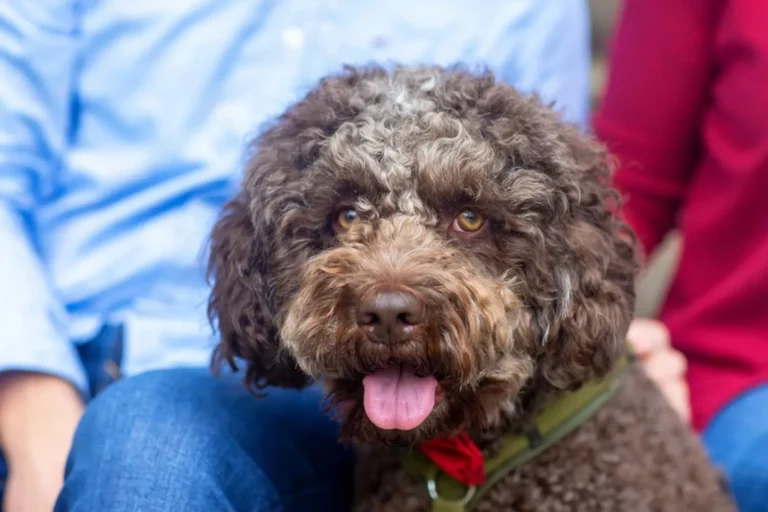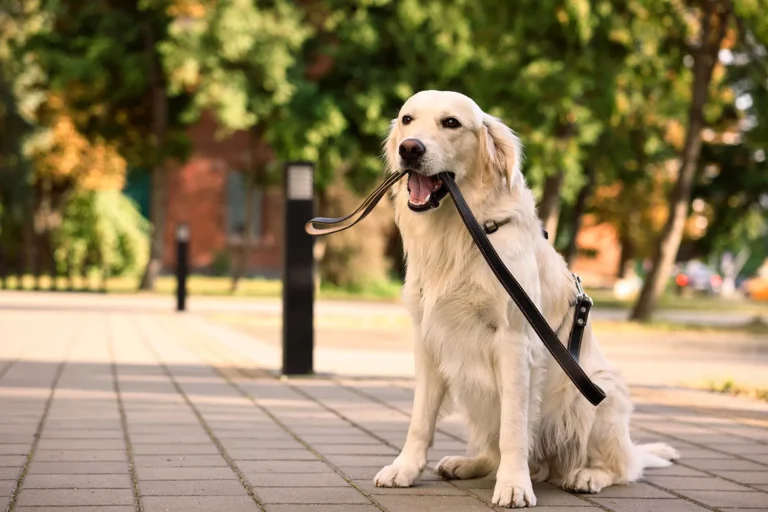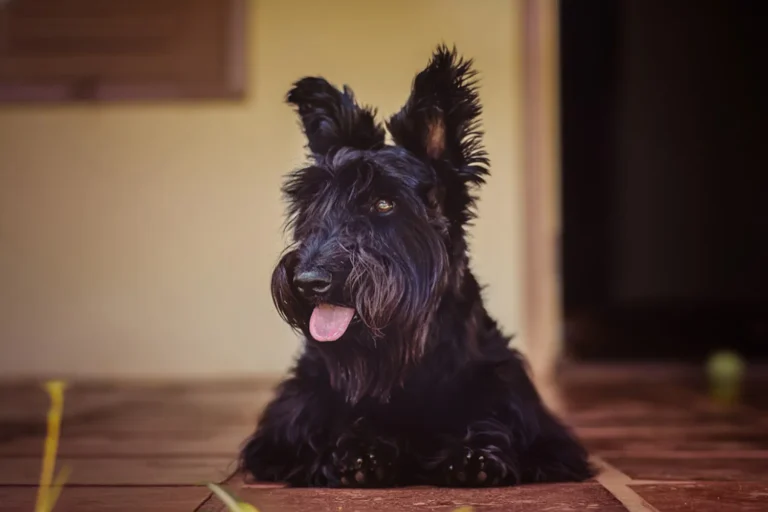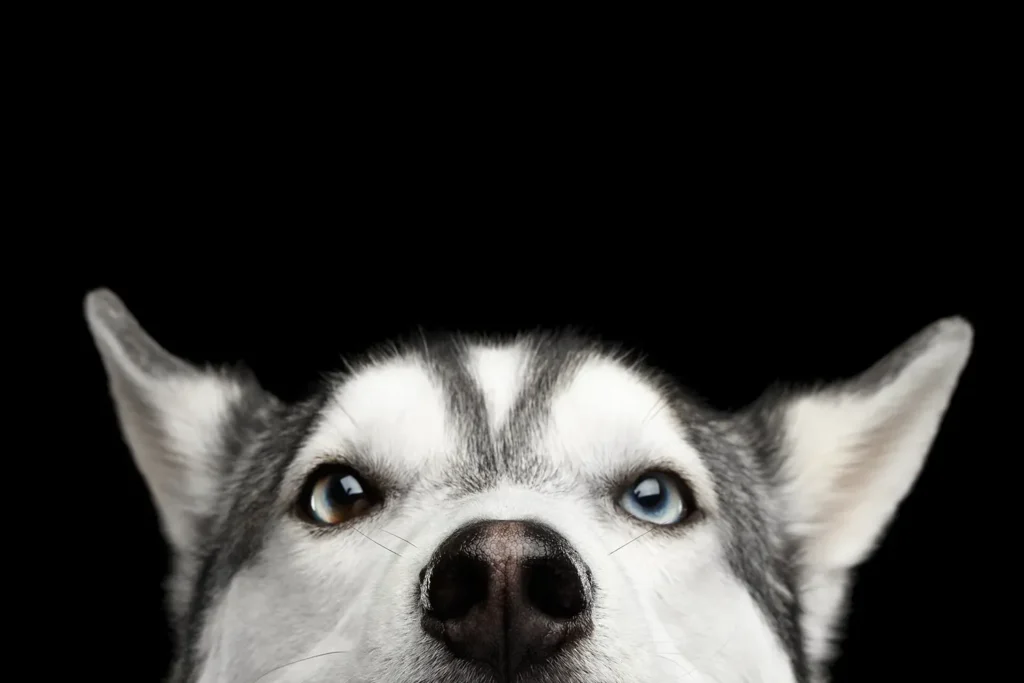
It’s easy to see why people all around the world adore the majestic, wolf like dogs we know as Siberian Huskies. Those striking eyes (sometimes one blue, one brown), the mischievous grin, and that plume of a tail curled over their back Huskies look like they strolled straight out of a snowy fairy tale. I remember the first time a neighbor’s Husky “talked” to me with that famous woo woo howl; I laughed so hard I forgot I was holding a bag of treats, which, of course, vanished in about two seconds. They’re graceful and athletic, yet goofy and affectionate, and they have a way of making everyday life feel a little more adventurous. On a cold morning, watching a Husky bounce through fresh snow is like watching pure joy in motion.
If you’re smitten with the look, just know the personality is just as big. Huskies are energetic social butterflies who need lots of exercise and mental games to stay happy. When I dog sat one for a week, I learned quickly that a long walk is good, but a good run or a puzzle toy is better otherwise that energy finds its own outlet, like turning your socks into confetti. They’re famous escape artists too, so a secure yard and a sturdy harness are your best friends. Expect conversations (they don’t bark much, but they love to “sing”) and epic shedding seasons; a good brush and a sense of humor will save your sanity. Give them structure, plenty of activity, and a place in your daily routine, and you’ll understand why Husky lovers can’t imagine life without those snow dog shenanigans.
History and Origin of the Siberian Husky
Picture the icy expanse of Northeast Asia, where the Chukchi people relied on their dogs not just for work, but for warmth and companionship. The ancestors of today’s Siberian Husky were bred by the Chukchi as swift, efficient winter sled dogs built to cover long distances over frozen terrain while conserving energy. At night, those same dogs curled up with the family, often sleeping alongside the children for warmth and comfort. I love that detail; it explains so much about the Husky’s mix of stamina and sweetness. A musher I met once joked that Huskies are “marathoners with cuddle mode,” and honestly, that’s spot on.
In 1908, these remarkable dogs were brought to Alaska, where their speed and endurance turned heads immediately. During the Gold Rush, Alaskan dog drivers recognized how exceptional they were, and soon Huskies were leading teams in races and hauling supplies. That same year, the legendary All Alaska Sweepstakes took off a grueling 408-mile dogsled race and Siberian Huskies quickly became the dogs to watch. I remember standing in a tiny museum in Nome, staring at old black and white photos of compact, bright eyed Huskies at the finish line, looking as if they could go another hundred miles just for fun.
Their reputation only grew from there. Think of the famous 1925 serum run to Nome teams that included many Siberian Huskies relayed life saving medicine through brutal conditions, cementing their place in northern lore. By 1930, the breed was officially recognized by the American Kennel Club, and they’ve continued to thrive in North America ever since. Today, the Siberian Husky is the 12th most popular dog breed in the United States, and I still see that same spirited spark whether I’m watching a sled team glide over fresh snow or a suburban Husky pulling a skateboard down my block.
A little owner to owner advice, informed by their history: these dogs are happiest when they have a job. It doesn’t have to be mushing try canicross, skijoring, or even a sturdy jogging routine. Give them a task, some cool weather, and your company, and you’ll see the Chukchi legacy shine through. And that bedtime snuggle habit? Let’s just say, if you let a Husky onto the sofa once, you may never get your spot back.
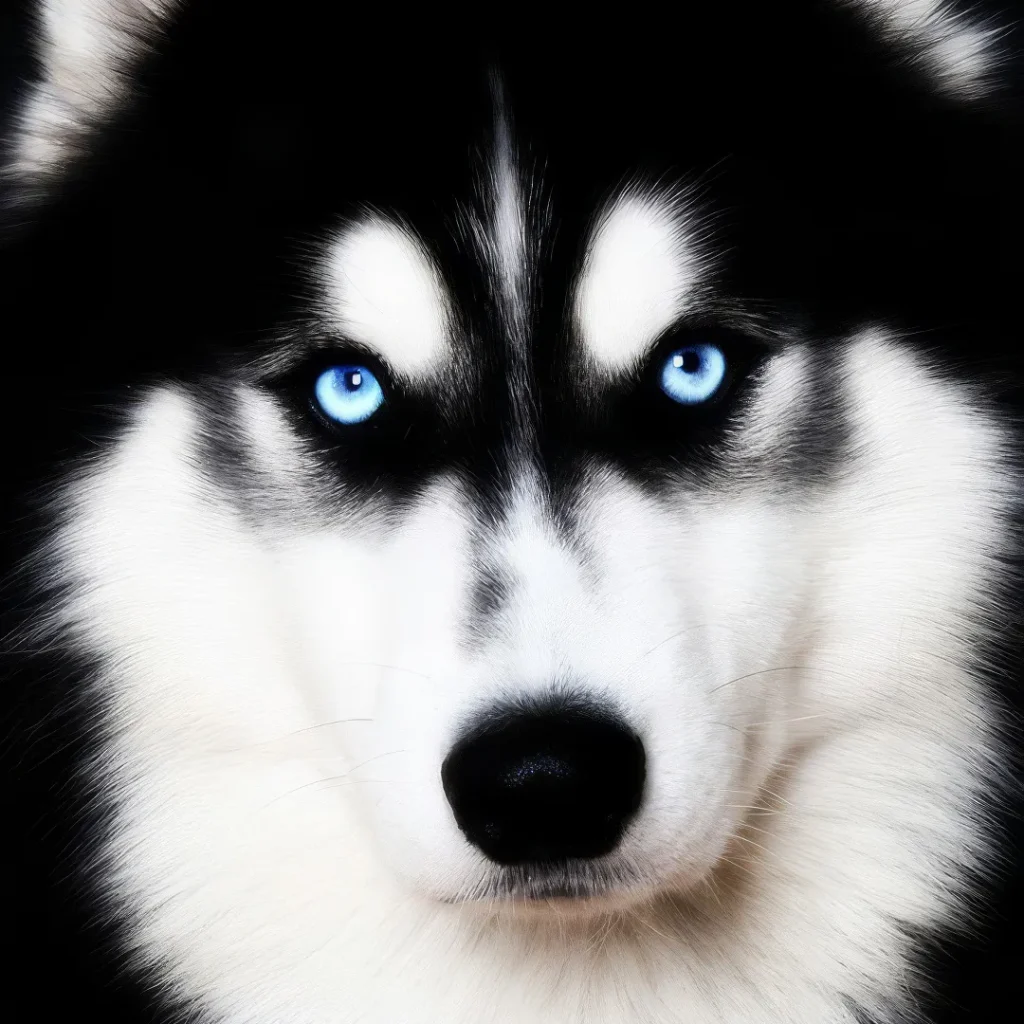
What Is the Siberian Husky?
If you’ve ever crossed paths with a Husky, you know they turn heads. They have that wolfish elegance well built bodies wrapped in a thick, plush double coat, erect ears that perk at every sound, and a bushy tail that often sweeps over their back like a feathered flag. Their coats come in so many colors and markings black and white, red and white, gray, agouti that I once joked with a friend their dog looked like he’d been painted by a snowstorm.
And those eyes. Huskies can have piercing ice blue eyes, warm brown eyes, one of each, or even multi colored eyes with flecks that look like stardust. My neighbor’s Husky would pause at crosswalks and get more compliments than the rest of us combined. It’s hard not to stare back.
Under all that beauty is a compact, athletic body built to work. Huskies were bred to pull light loads over long distances, and you can feel that in their easy, efficient stride. I once tried a gentle canicross run with a friend’s Husky, and wow he made me feel like I’d suddenly grown turbo legs. They’re quick, strong, and astonishingly tireless when they’re in their element.
A little practical advice from the trenches: give them jobs and plenty of exercise. Long walks, jogs, or a good pull on a harness will keep that happy engine purring. Expect seasonal “coat explosions” a de shedding session (or three) is your new best friend. Don’t shave that double coat; it’s their natural climate control. And keep leashes and fences secure Huskies are adventurous, vocal, and famously curious. They’ll talk to you in that signature “woo woo” way, and if you listen closely, you’ll swear they’re telling their life story.
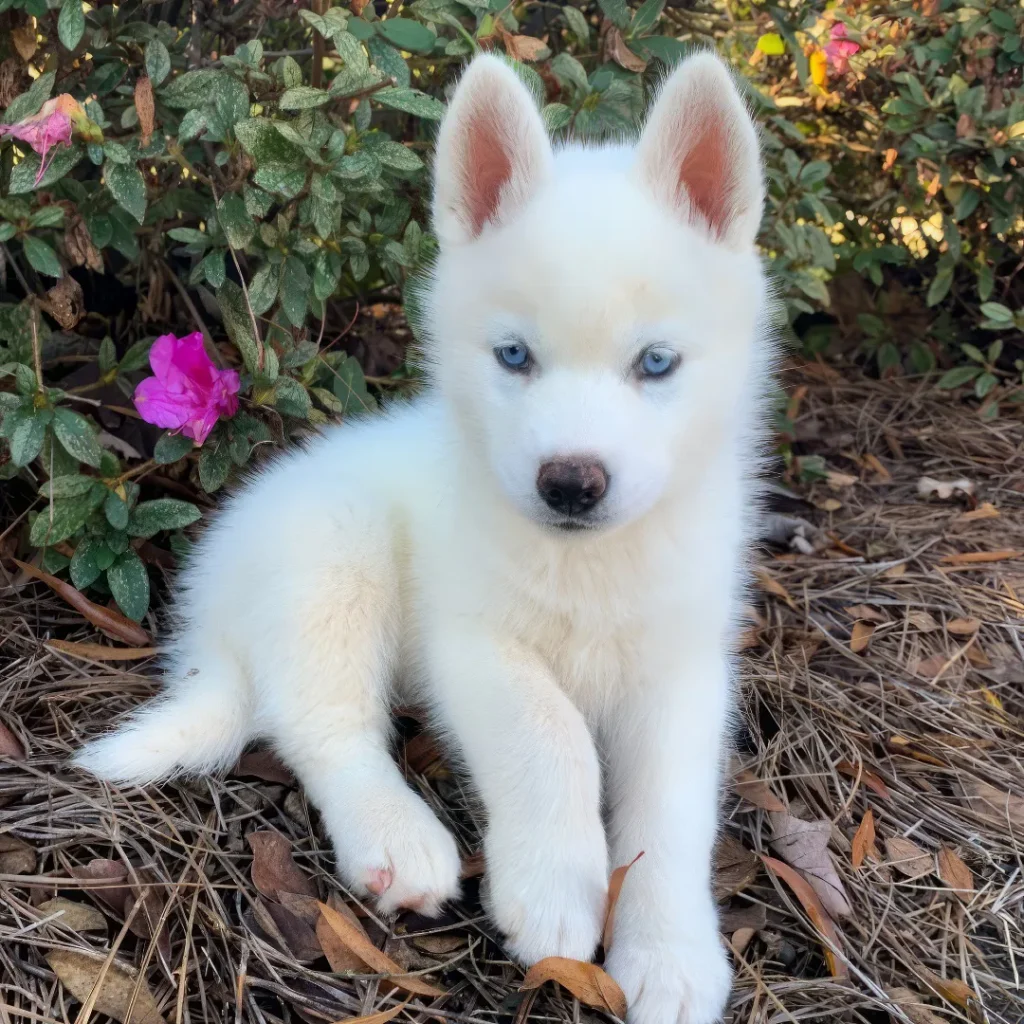
Who Is a Siberian Husky Best For?
Siberian Huskies are a blast to live with fun, friendly, and wonderfully free spirited but they’re definitely not a “set and forget” kind of dog. They thrive on both mental and physical stimulation, plus a good dose of your attention. If you’re gone all day and hoping a backyard will entertain them, a Husky will get creative. I once dog sat a Husky named Koda who figured out how to turn a loose fence board into a door. He didn’t want to run away from home he just wanted to see what was happening down the street.
If you consider yourself active, you’re speaking their language. Huskies need regular long walks and, yes, they absolutely love to run. Think jogging buddies, canicross, or brisk hikes with a loaded backpack (for you, not them). On days I couldn’t do a long run with a friend’s Husky, we’d mix in nose work games and puzzle feeders tiring their brain can be just as important as tiring their legs. A tired Husky is a happy Husky; an under stimulated Husky is a home decor “rearranger.”
Because they’re wired to chase, supervision is key. Keep them on a leash or harness unless you’re in a large, secure enclosure. I like a well fitted harness with a backup clip to the collar just in case. High fences (think six feet and up) and dig proofing matter; they’re clever, athletic problem solvers. Recall can be solid in your living room and suddenly optional when a squirrel appears, so management beats wishful thinking.
Their thick double coat means they’re built for chillier weather and can struggle in the heat. If you live somewhere warm, plan early morning or late evening exercise, lots of shade and water, and cooling breaks. A kiddie pool in the yard worked wonders for Koda; he’d splash, sprawl, and look pleased with himself for a good half hour. In winter, they’re in their element. I once watched a Husky in Vermont joyfully plow nose first through fresh snow like a furry snowplow.
As for other pets, proceed thoughtfully. Huskies are usually gentle with people and often friendly with other dogs, but that strong prey drive is real. Birds, rabbits, guinea pigs and sometimes cats can trigger chase instincts. If you’ve got small pets at home, use strict management: secure enclosures, baby gates, supervised interactions only. Some households make it work; I personally wouldn’t leave a Husky alone with small animals, ever.
The great news is that with proper training and early socialization, Huskies make versatile companions for people of all ages. Puppy classes, impulse control games, and consistent routines go a long way. They’re happiest with an engaged owner who enjoys being outdoors, has a sense of humor, and doesn’t mind a little extra effort. If that sounds like you, a Siberian Husky might just be your favorite adventure partner in a fluffy coat.
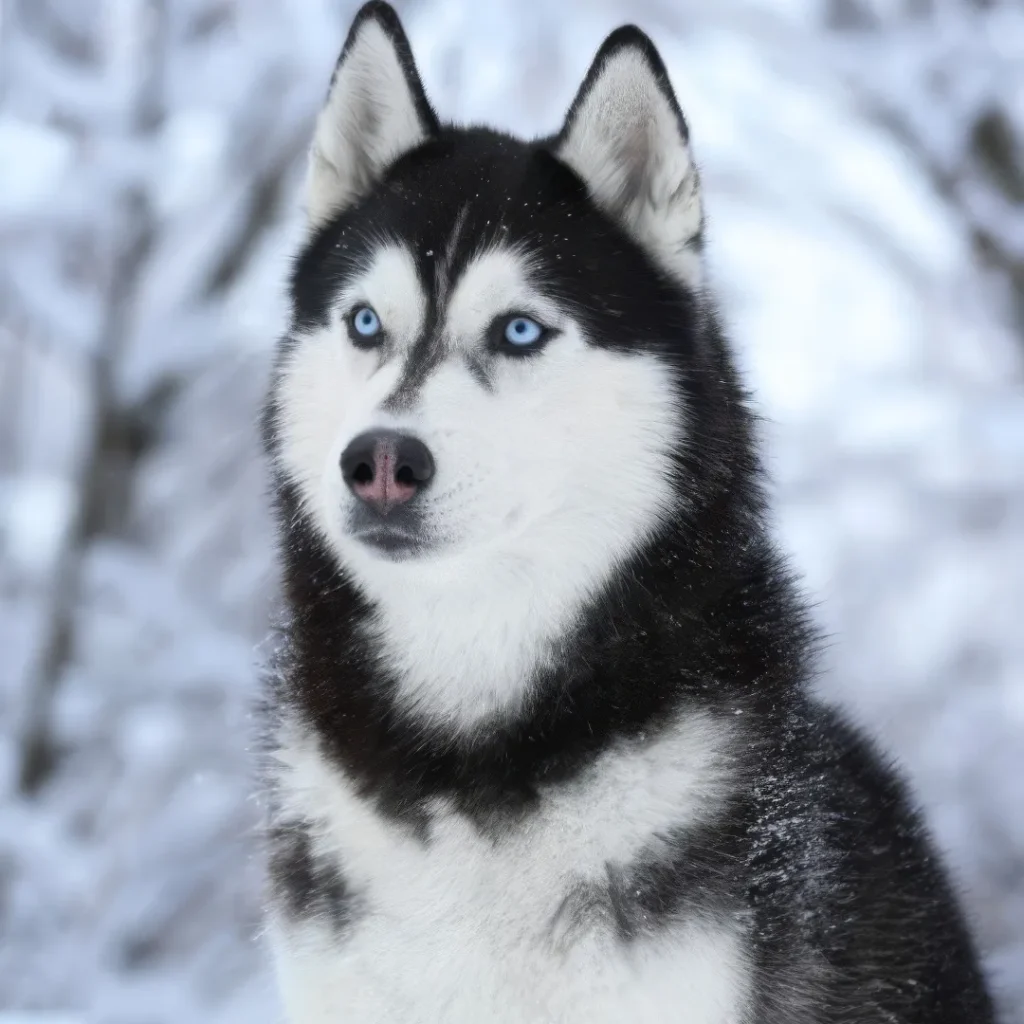
Siberian Husky Grooming & Shedding
Huskies are famously clean dogs mine practically wipes his own paws on the doormat and they rarely smell “doggy.” Most do well with just a few baths a year. Keep baths simple: a gentle dog shampoo, lukewarm water, and a thorough rinse. I always brush before bath time to loosen old fur and prevent tangles, and I dry with a cool setting dryer or let the sun do the work. Too many baths can strip their coat’s natural oils, so unless they’ve rolled in something questionable (been there), less is more.
That beautiful double coat is the main event: a dense undercoat for insulation and longer guard hairs to protect it. Outside of shedding season, plan on a once a week brush to keep things shiny and comfortable. I like a pin brush for overall fluffing and a metal comb for going line by line behind the ears, under the collar, and along the back legs those are the “surprise tangle” zones. A slicker brush or undercoat rake can help too, but be gentle so you don’t damage the guard hairs.
Twice a year, Huskies “blow” their undercoat, usually spring and fall. That’s when the fur turns into confetti expect drifts along the baseboards. During this stretch, daily brushing is your best friend. I do short sessions, 10-15 minutes at a time, and work in sections: shoulders, back, then rump and pants. A metal comb pulls out the old undercoat beautifully; I follow with a pin brush to smooth things out. Tip: take it outside on a breezy day and wear an old T shirt you’ll thank me later. One April afternoon I filled an entire grocery bag with fluff in twenty minutes; the crows in our neighborhood happily used it for nesting material.
Nails need regular attention too. Even active Huskies who run on trails usually need trims every 2-4 weeks. If you’re new to it, go slow and keep styptic powder handy in case you nick the quick. I switched to a nail grinder for more control, and we do a few nails at a time with plenty of treats. Teeth matter just as much aim for brushing several times a week, plus dental chews or water additives if your vet approves. A quick weekly ear check is smart, especially after swimming; upright ears stay drier, but they can still collect a bit of grit.
A couple of pro tips: start handling paws, tail, and ears when they’re young to make grooming a non event. Keep sessions upbeat Huskies can be opinionated, but a pocketful of high value treats turns them into supermodels. And resist the urge to shave that double coat; it’s their built in climate control and sun protection. With the right routine, you’ll have a Husky who looks stunning, sheds a little less around the house, and truly enjoys the one on one time with you.
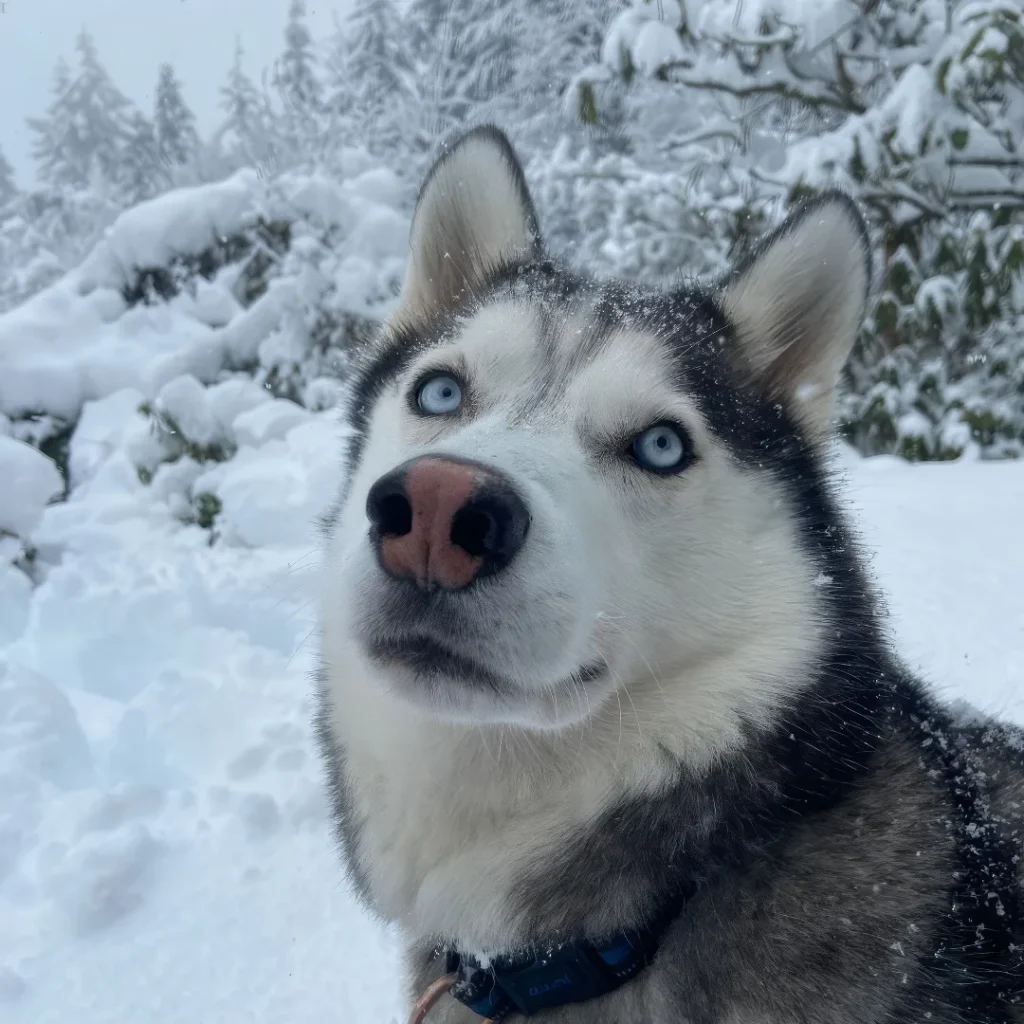
Do Siberian Huskies Bark a Lot?
Mine hardly ever barks at the door, but he can hold a full “conversation” about why breakfast is five minutes late. Compared to many breeds, Huskies don’t bark much at all. Instead, they’re wonderfully chatty in their own way think howls, whines, and those famous “woo woo” speeches. I’ve heard Huskies mimic words so clearly that a friend’s dog sounds like he’s saying “I love you.” It’s not a parlor trick so much as a breed trait; they’ve got this impressive range of sounds and they aren’t shy about using it.
If you’re considering a Husky, expect more singing than traditional barking. Sirens, harmonicas, or even your off key shower performance can kick off a duet. They’re pack minded dogs, so vocalizing is their way of staying connected. To keep the chorus under control, give them plenty of exercise and mental work long walks, runs, puzzle toys, even a bit of nose work. When my Husky gets his energy out, he’s more likely to hum softly on the couch than stage a living room opera.
Training helps, too. Teach “quiet” by calmly rewarding moments of silence, and give them a cue for “talk” so they learn when it’s showtime and when it isn’t. If you share walls, a white noise machine and a predictable routine can be your best friends. Quiet barkers? Yes. Quiet dogs? Not exactly and honestly, that’s part of their charm.
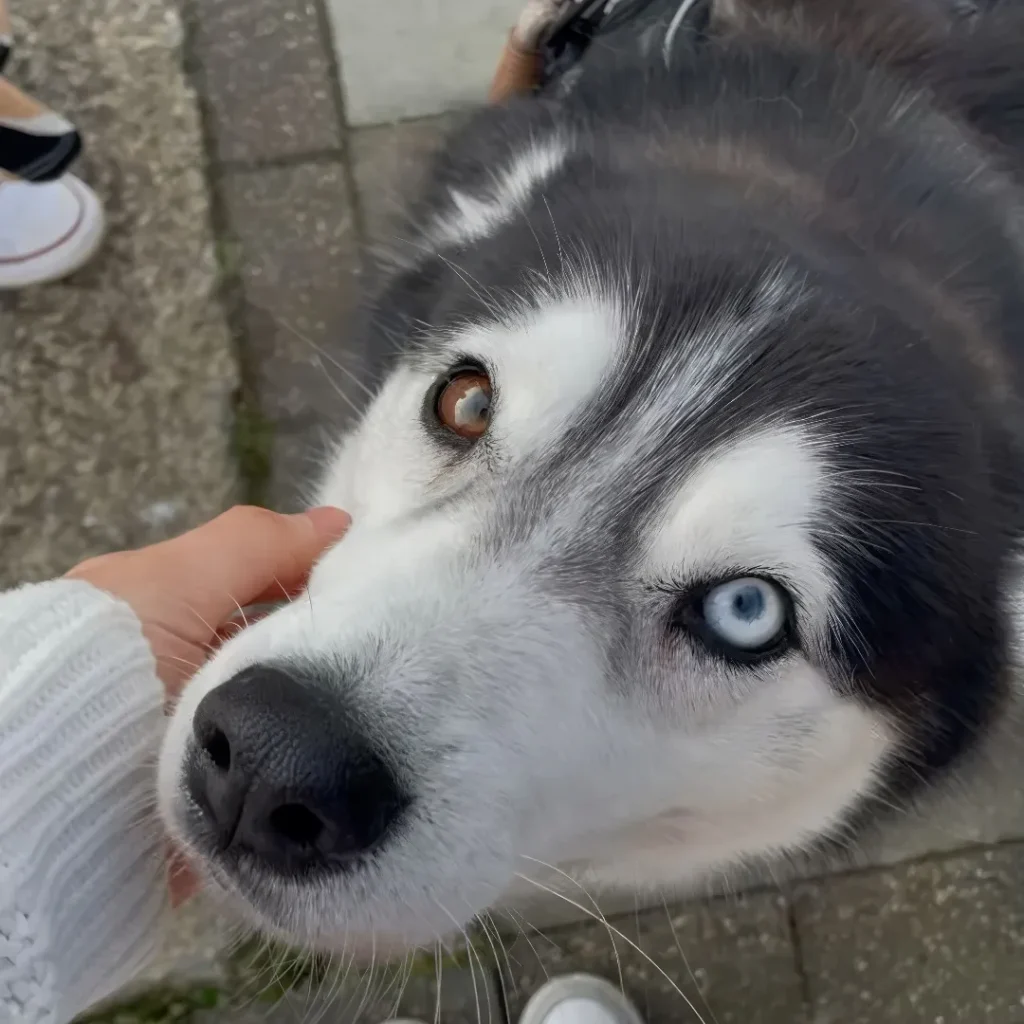
What Is the Average Weight and Height of a Siberian Husky?
Beneath all that glorious fluff, Huskies are surprisingly lean. Adult males typically stand 53 to 60 cm at the shoulder, while females are a touch smaller at about 51 to 56 cm. On the scale, a healthy adult usually falls between 16 and 27 kg. For anyone who thinks in inches and pounds, that’s roughly 20-23.5 inches tall and about 35-60 pounds. Males often sit toward the higher end, but there’s plenty of overlap. https://en.wikipedia.org/wiki/Siberian_Husky
A lot can influence where a Husky lands in that range activity level, genetics, and even season. My friend’s sprint line Husky hovers around 18 kg and can run like the wind, while my neighbor’s show line girl keeps a solid 25 kg and looks like a snow wolf in winter. Both are perfectly healthy; they’re just built for different jobs. I remember thinking my own Husky looked “too thin” after a summer of hiking, but the vet reminded me that a fit Husky should be more athlete than teddy bear.
To check your dog’s size at home, measure height at the withers (that bony spot between the shoulder blades). I use a book against the wall and a tape measure. For weight, I do the classic hold the dog on the scale trick and subtract my weight. More important than the number is body condition: you should feel ribs without digging, see a defined waist from above, and a slight tummy tuck from the side. If your Husky falls outside the typical range or you’re unsure, a quick chat with your vet brings peace of mind.
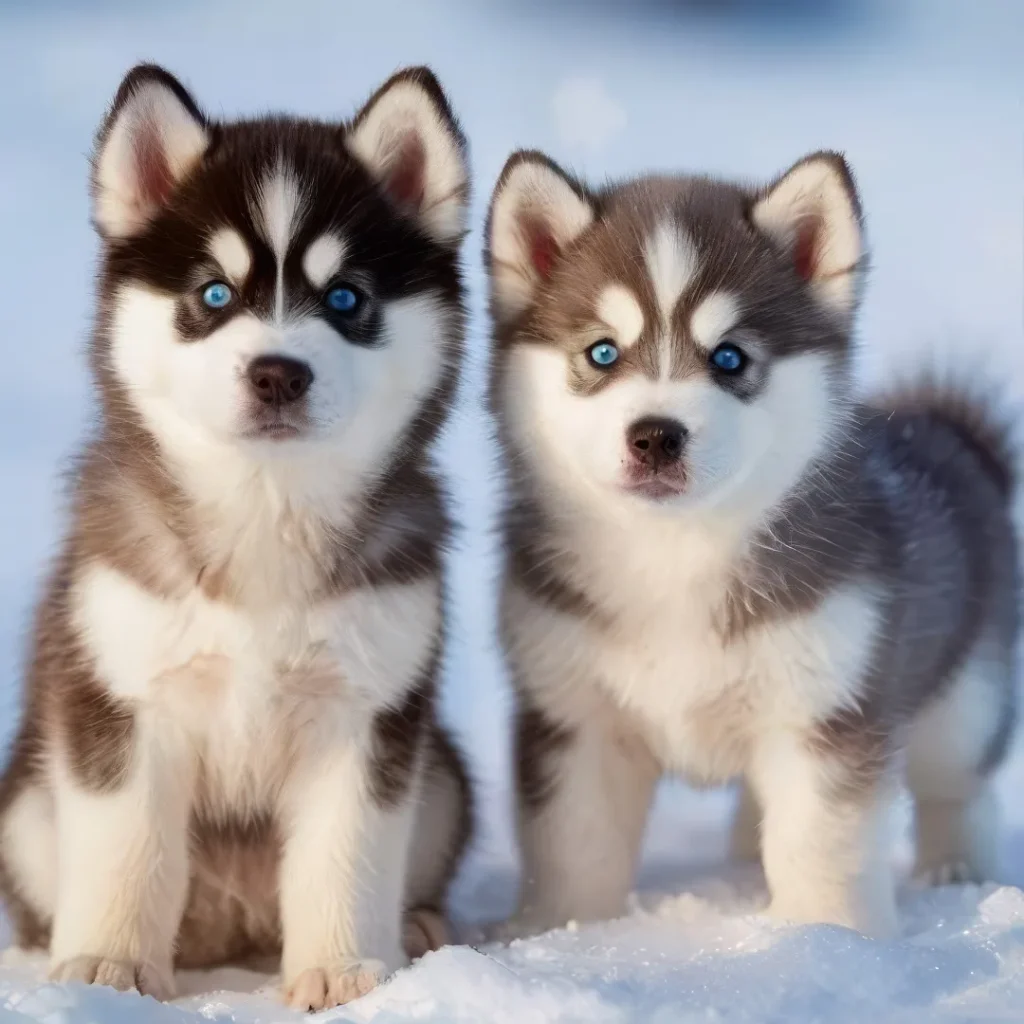
Are Siberian Huskies Easy to Train?
Smart as a whip but famously independent, Huskies learn quickly when it suits them. That’s why early, consistent training and lots of socialisation are so important. Puppy classes were a game changer for my Husky; we practiced basic cues around other dogs, people, and all the weird stuff they’ll meet in real life noisy kids, cyclists, people in hats. The more you show them the world early on, the more confidently they handle it later.
Huskies are social butterflies with a deep, primal urge to run. That combo can be tricky if you’re not prepared. I don’t leave mine alone for long stretches; when I had to, I lined up a dog walker and stuffed puzzle toys and frozen Kongs to keep her brain busy. Bored Husky plus empty house equals creative home renovation, if you know what I mean. And because that running instinct is strong, I never let her off leash unless we’re in a securely fenced area. Even the best trained Husky can decide a squirrel is more interesting than you. A long line in open spaces has been a great compromise for us freedom with a safety net.
Day to day training works best in short, upbeat sessions with high value rewards. Think five minutes of focus, then a little play break. Work on rock-solid basics sit, down, stay, leave it, and especially recall knowing that recall is still no guarantee off leash for this breed. I also like impulse control games like “wait” at doorways and “settle” on a mat; they help take the edge off that go go go energy. And invest in a sturdy harness and escape proof yard; Huskies are talented escape artists. I learned to check fence latches twice after mine figured out how to lift one with her nose.
If you’re dreaming of harness work canicross, skijoring, or pulling a sled plan on hours of patient practice. Start slow, teach trail cues like “line out,” “gee,” “haw,” and “whoa,” and keep sessions fun so your Husky wants to work with you, not just power ahead. I joined a local sled dog club and booked a few sessions with a trainer who knows trail work; the guidance saved me months of guesswork and a couple of tangled lines. With dedication, structure, and a sense of humor, Huskies can become wonderful partners they’ll keep you honest, keep you moving, and keep life delightfully interesting.
How Do Siberian Huskies Behave? A Look at Their Temperament and Personality
Huskies are bursting with personality, and that’s half the fun of living with one. Around the house, they can be sweet, snuggly couch companions; step outside and that independent, willful streak wakes up like someone flipped a switch. I remember dog sitting a husky named Koda who would melt into a puddle of fur during movie night, then turn into a free spirited adventurer the second we clipped on the leash. Loving and docile, yes but with a mischievous glint that says, “I’ve got my own plans.”
They’re generally loyal, gentle, and incredibly friendly. Many are wonderful with kids patient, playful, and sturdy enough for backyard games. My niece used to drape herself over my neighbor’s husky while reading picture books on the rug, and that dog barely blinked. As with any breed, supervision is smart, but their easygoing nature shines with families. They’re social butterflies too, happy to make friends with other dogs and people alike. Don’t count on them as guard dogs, though they’re more likely to greet a stranger with a wag and a “woo woo” than a warning.
Huskies are sharp, alert, and yes, eager to please just remember they like to please on their own terms. Training works best when it’s fun and fast paced: think short sessions, high value treats, and plenty of praise. A trainer I met at a winter fun run swore by mixing recall practice into games of chase and tug, and I believe it; ask a husky to perform a dozen sits in a row and you’ll get the famous “selective hearing,” but turn it into a game and they’re all in. Puzzle toys, nose work, and light pulling sports like canicross can channel that keen mind and sled dog heritage.
Speaking of heritage, these dogs were bred for endurance, and they’ve still got miles in their tank. Daily exercise isn’t a suggestion; it’s the secret to a calm, content husky. Plan on brisk walks, hikes, or jogs, and sprinkle in mental challenges to keep boredom at bay. Also, invest in good fencing tall and secure because a bored husky is a creative escape artist. I once watched a husky in a Montana yard map out an escape route like a tiny architect, complete with tunnel attempts. Keep them engaged, be consistent, and you’ll have a gentle, spirited companion who makes every day feel a bit more adventurous.
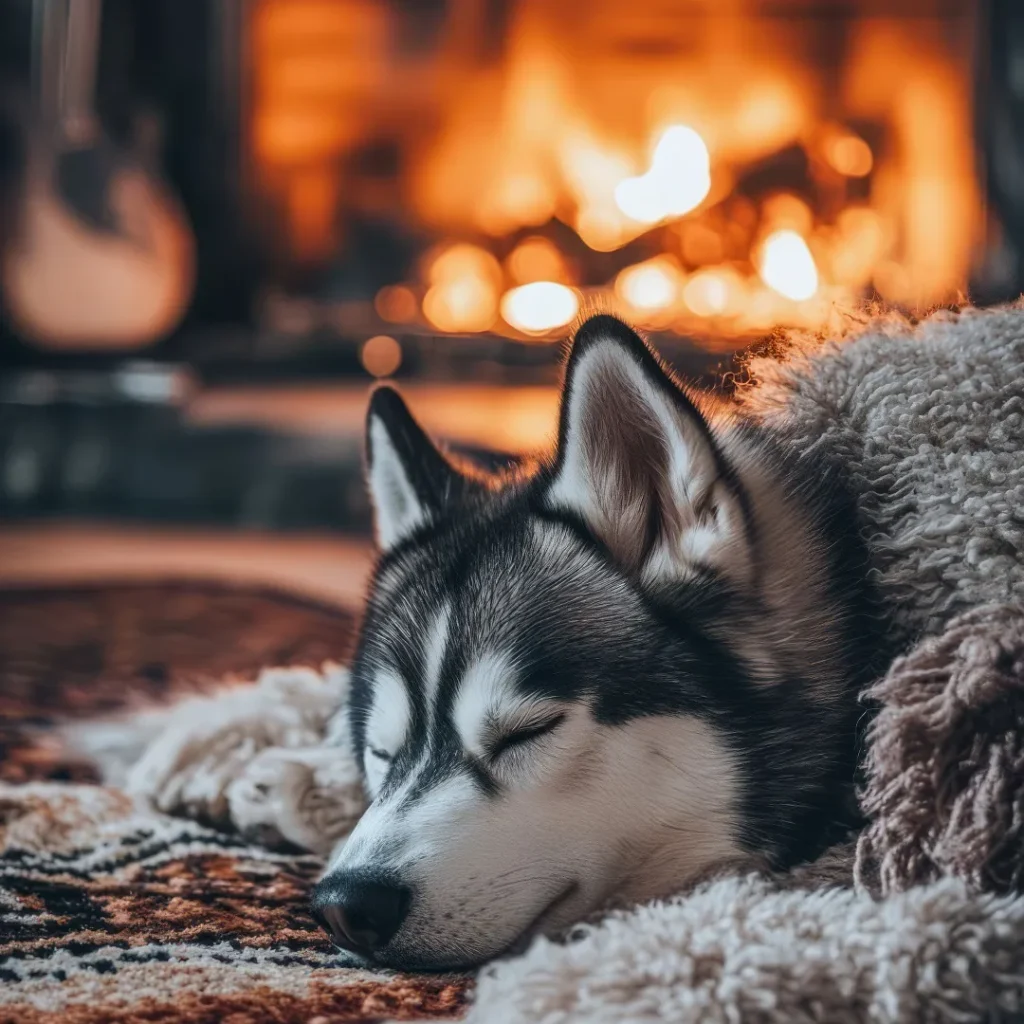
Do Siberian Huskies have common health issues?
Siberian Huskies are, thankfully, a pretty robust, healthy breed especially when they come from responsible breeders who screen their dogs. That said, it’s still smart to know what can pop up so you can catch things early. I always say prevention is a Husky owner’s best friend. My first Husky, Koda, could run for miles like a furry marathoner, but our standing date at the vet once a year kept me one step ahead of trouble.
Hip dysplasia is one of the main things on the radar. It’s a genetic condition where the thigh bone doesn’t fit perfectly in the hip joint, which can lead to discomfort and arthritis over time. You won’t always see it in a young, zoomy Husky, but signs like a bunny hop gait, stiffness after naps, or reluctance to jump can be clues. Keeping your Husky lean is huge every extra pound stresses the joints. I’m a big believer in slow, steady growth for puppies (no marathon stair sessions for the little ones), using rugs for traction on slippery floors, and asking your vet about hip evaluations if there’s any concern. Reputable breeders often do OFA hip certifications; it’s worth asking about.
Eyes are another area to watch with Huskies. Regular eye exams can make all the difference, even when everything looks normal at home. If you ever notice squinting, cloudiness, redness, or your dog bumping into furniture, don’t wait. Glaucoma, for example, is an emergency pressure inside the eye rises, it’s painful, and quick treatment can save vision. Cataracts can also occur; sometimes they’re mild, and sometimes surgery is the best route. Then there’s progressive retinal atrophy (PRA), a degenerative condition that leads to blindness over time. PRA isn’t curable, but Huskies are amazingly adaptable. My friend’s boy, Niko, started losing his night vision first; we kept pathways clear, used voice cues, and avoided moving furniture. He still chased scents in the yard like a champ.
Hypothyroidism is fairly common in many breeds, Huskies included. It’s a thyroid issue that can show up as weight gain, thinning hair or bald patches (alopecia), flaky skin, and a general “meh” energy level. A simple blood test gives you answers, and daily medication usually sets things right. I’ve seen dogs perk up within a couple of weeks coat gets glossier, waistline reappears, and that Husky sparkle comes back.
You might also hear about “snow nose,” or nasal depigmentation. It’s when the nose lightens from black to pinkish, often in winter. It looks dramatic in photos but is usually harmless. If your dog’s nose is lighter and you’re out in bright sun, a dab of dog safe sunscreen can be a smart extra step.
Zinc deficiency is a Husky quirk worth mentioning. Some have trouble absorbing zinc properly, and it can show up as crusty, inflamed skin around the mouth, eyes, and sometimes the footpads. The first time I saw it on a foster Husky, I thought it was just a hot spot. A vet visit and the right diet, plus a zinc supplement, cleared it up. The key here: don’t add zinc on your own. Too much can cause other issues, so work with your vet on dosing and consider diets formulated with Huskies in mind.
A few practical tips from the day to day trenches:
– Pick your breeder carefully if you’re buying. Ask about hip certifications and eye clearances. If you’re adopting, try to get the dog’s medical records and schedule a baseline checkup.
– Keep your Husky fit. You should feel ribs without seeing them sharply. Joint friendly exercise, especially on softer surfaces, beats high impact jumping.
– Do yearly vet visits and consider an eye exam with a veterinary ophthalmologist, especially as your Husky ages.
– Groom regularly. That weekly brush does more than fight tumbleweeds it helps you spot skin changes early.
– Watch for subtle signs. Huskies can be stoic. A little stiffness, a change in pace on your usual walk, or a new reluctance to hop in the car can be their way of whispering that something’s up.
The good news is that most Huskies live active, joyful lives with minimal health drama. With a bit of awareness and routine care, you’ll likely spend more time laughing at snow zoomies and less time at the vet. And honestly, that’s the way our independent, mischievous snow dogs like it.
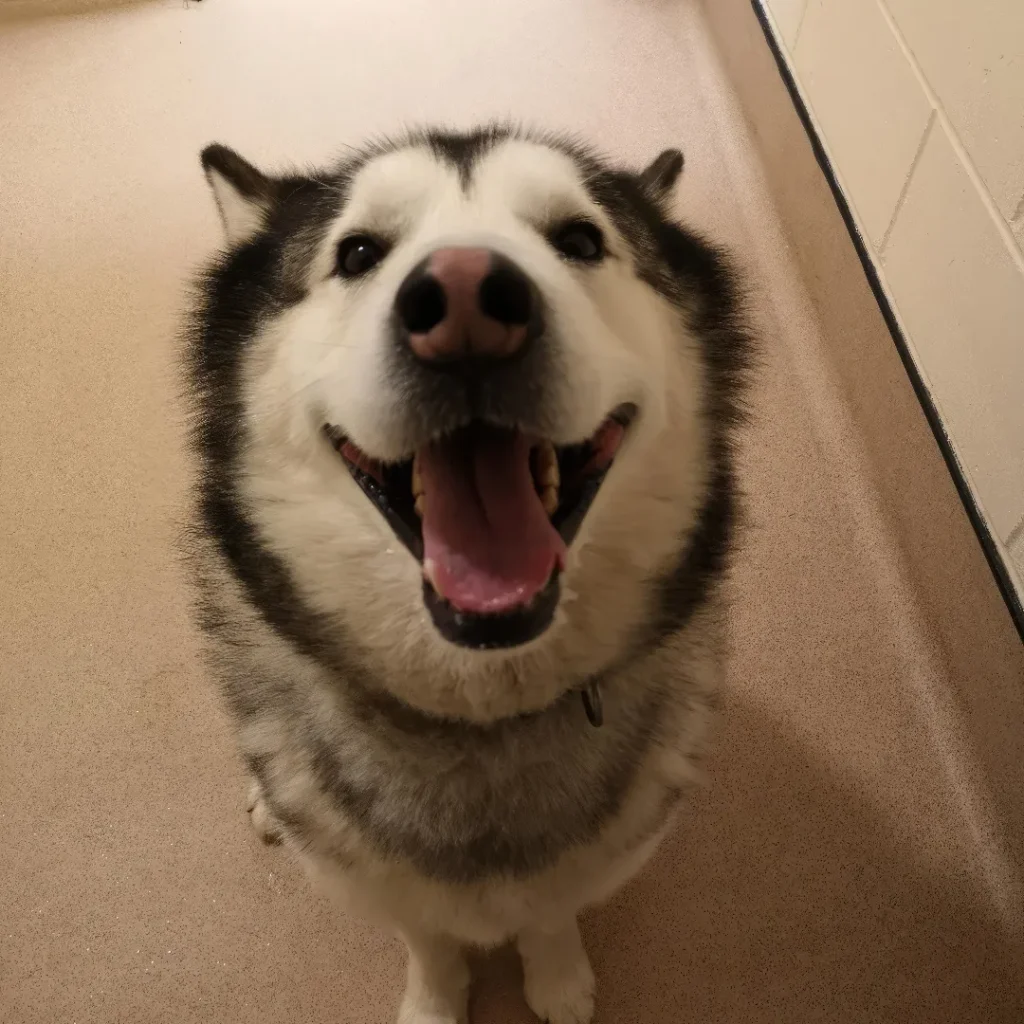
What Is the Lifespan of a Siberian Husky?
Most Siberian Huskies share their lives with us for about 12 to 14 years. That’s the sweet spot you can plan for. Every now and then you’ll see stories online about Huskies living to 18 or even 19. Those are heartwarming to read, but they’re anecdotal and not officially verified think of them as the exception, not the rule. Genetics, good care, and a bit of luck all play a part.
If you want to help your Husky reach the higher end of that range, focus on the basics done well. Keep them lean and active Huskies are born to move, but smart exercise is key. I used to swap summer midday runs for early morning walks to keep my old guy cool, and he was just as happy trotting in the shade as sprinting in the sun. Feed a balanced diet, keep up with dental care, and see the vet regularly; little checkups catch little problems before they become big ones. Mental exercise matters too puzzle toys, training games, and new scents on the trail keep their minds bright.
As they hit their senior years, think “adjust,” not “retire.” Trade sprints for sniffari strolls, add a soft bed for stiff joints, and throw down a few non slip rugs. My friend’s Husky made it to 15 with a ramp for the car and shorter, more frequent adventures still bossing us around with those famous blue eyes. Celebrate every birthday, every snowflake, every goofy grin. However long you get, a Husky makes it count.
How Much Should You Feed a Siberian Husky?
Feeding a Husky starts with one big rule: quality matters. A high-quality, complete diet does more than keep them full it supports that gorgeous coat, healthy skin, and the steady energy Huskies are known for. They’re working dogs at heart and need the right fuel to keep going, whether that’s a long hike or a spirited game of zoomies in the yard. I like to say it’s less about stuffing the bowl and more about the right kind of calories for your dog’s lifestyle. Your vet is your best partner here every Husky is a little different, and they can help you fine tune portions so you’re not underfeeding or accidentally packing on extra pounds.
When you’re picking food, look for WSAVA and AAFCO on the label those seals tell you the diet is complete and balanced. I learned the hard way not to get swept up in trendy “boutique” diets. Raw and grain free options may sound appealing, but they’ve been linked to infections and even heart disease. I always run food changes by my vet, and it’s saved me a lot of second guessing.
Most Huskies settle into two meals a day after puppyhood. How much goes in the bowl depends on your dog’s size, age, and how active they are. My Husky eats a touch more after a big trail day and a little less during lazy, hot afternoons. I keep a measuring cup by the food bin, start with the bag’s feeding guide, and adjust slowly. A quick body check helps: you should feel ribs with light pressure and see a nice waist when viewed from above. If the ribs vanish under a layer of pudding, it’s time to dial it back. And yes, I’ve done the “weigh in at the vet with a sheepish smile” routine no judgment, just course correction.
Treats are fine in moderation, especially for training, but keep them small and factor them into the day’s calories. I often use part of the regular kibble as “treats” so I’m not doubling up. Skip table scraps rich or seasoned foods can be unhealthy and they teach persistent begging faster than you’d think. One last thing that matters more than we remember: fresh water, always. I keep a second bowl by the back door because my Husky somehow drinks twice after a single play session.
If you’re ever unsure about amounts, changes in appetite, or which food suits your Husky best, check in with your vet. A few small tweaks can make a big difference in their long, healthy, tail wagging life.
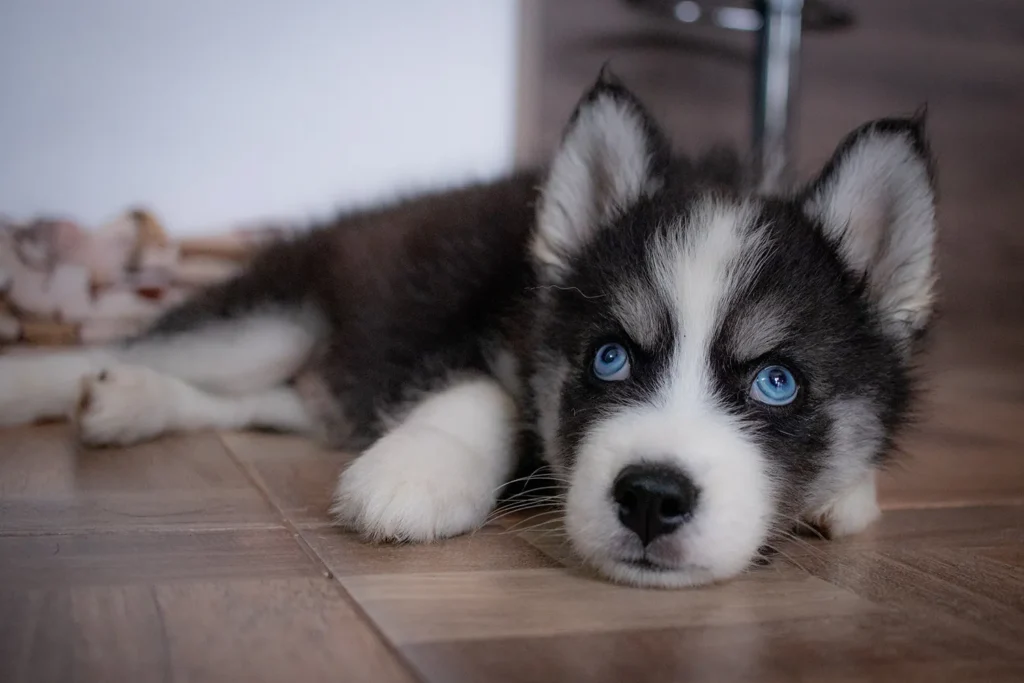
Siberian Husky FAQs
Is a Siberian Husky ideal for a first time dog owner?
Short answer: not usually. Huskies are wonderful, but they’re a lot. They’re high maintenance, clever, and independent, and they need consistent obedience training right from puppyhood. Think daily practice, not a once a week class. They’re athletic, too, with energy to spare and a knack for testing boundaries my friend’s Husky learned how to open the side gate and took himself on a neighborhood tour like it was his job. If you’re timid or brand-new to dogs, the combination of strength, stubbornness, and smarts can be overwhelming.
If you’re set on a Husky anyway, stack the deck in your favor: sign up for a good puppy class, commit to structured exercise (a tired Husky is a cooperative Husky), and get a secure yard. Leash manners and recall take time with this breed, so start early. I also love crate training for Huskies it gives them a calm, safe place and saves your sofa from becoming a chew toy.
Do Siberian Huskies suffer from separation anxiety?
They can. Huskies are pack dogs through and through and thrive on human companionship. Left alone for too long, some will show stress and anxiety. One of mine used to start pacing the second he heard my keys; we practiced short absences and left a frozen lick mat, and it made a world of difference.
Some common signs of separation anxiety in Huskies are:
– Howling excessively
– Pacing, shaking or whining when they notice you are about to leave
– Destructive behaviour – damaging your house or belongings, urinating and defecating in the house
– Drooling or panting excessively
– Attempting to escape your property
To help, build up alone time slowly, pair departures with high value chew toys, and keep goodbyes calm. Make sure they’ve had a solid walk or brain game before you leave. Doggy day care or a midday dog walker can be a lifesaver for busy schedules. If the anxiety is severe, talk to a trainer or your vet for a plan that fits your dog.
Are Siberian Huskies hypoallergenic dogs?
Nope. Huskies are not hypoallergenic. They have a dramatically thick double coat and shed heavily usually two big “coat blows” per year, with regular shedding in between. If you struggle with dog allergies, a Husky is usually a poor fit. If your allergies are mild and your heart is set, spend time with a Husky beforehand, ideally indoors, and consider HEPA filters, frequent vacuuming, and strict “no dog on the bed” rules. But be honest with yourself comfort and health come first.
Will a Siberian Husky need professional grooming?
You don’t have to book salon days unless you want to. Routine grooming for a Husky is mostly about at home maintenance: brushing at least twice a week, and daily during those glorious shedding sessions. I once brushed enough undercoat in spring to make a whole second dog it looked like I’d shaken a snow globe in my living room.
Useful tools include an undercoat rake and a slicker brush. Bathe only when needed; too many baths can dry their skin. Trim nails regularly, clean ears as needed, and brush teeth. One important tip: don’t shave a Husky’s double coat. It helps regulate temperature and protect the skin. If you’re drowning in fur during shedding season, a professional “bath and blowout” can help move things along, but it’s not mandatory.
Final thought: Huskies are spectacular companions for people who love training, adventure, and a little chaos with their cuddles. If that sounds like you, and you’re ready to commit the time and energy, you’ll have a loyal, hilarious friend who keeps life anything but boring.
Disclaimer:
This article is for informational purposes only and doesn’t replace professional veterinary or training advice. Always consult a certified vet or dog trainer for guidance specific to your pup.
